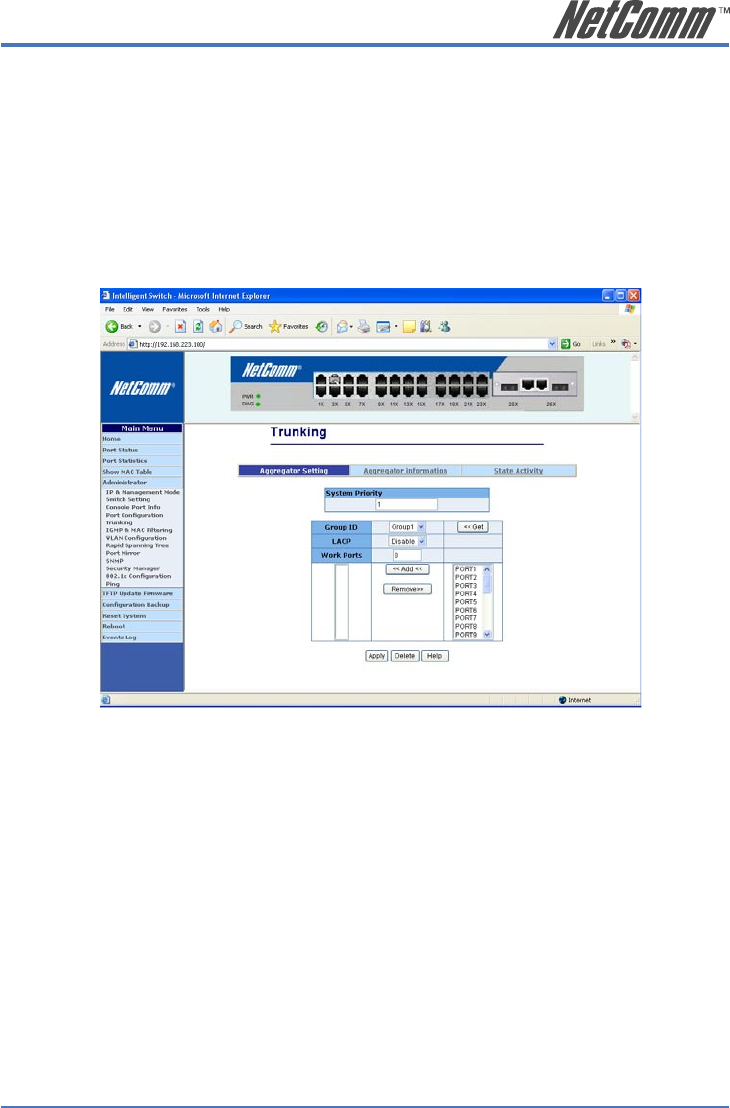
NP2624M User Guide 23
YML827 Rev1
2.5.5 Trunking
The Link Aggregation Control Protocol (LACP) provides a standardized means for exchanging
information between Partner Systems on a link to allow their Link Aggregation Control instances
to reach agreement on the identity of the Link Aggregation Group to which the link belongs, move
the link to that Link Aggregation Group, and enable its transmission and reception functions in an
orderly manner. In conclusion, Link aggregation lets you group up to eight consecutive ports into a
single dedicated connection. This feature can expand bandwidth to a device on the network. LACP
operation requires full-duplex mode, more detail information refers to IEEE 802.3ad
2.5.5.1 Aggregator setting
System Priority: A value used to identify the active LACP. The switch
with the lowest value has the highest priority and is
selected as the active LACP. Valid value is 1~65535.
Group ID: There are seven trunk groups to provide configure.
Choose the “group id” and click “Get”.
LACP: If enabled, the group is LACP static trunking group.
If disabled, the group is local static trunking group.
All ports support LACP dynamic trunking group. If
connecting to the device that also supports LACP,
the LACP dynamic trunking group will be created
automatically.
Work ports: Allows for a maximum of four ports to be aggregated
at the same time. If LACP static trunking group,
exceeds ports is standby and able to aggregate if
work ports fail. If local static trunking group, the
number must be as same as the group member ports.


















